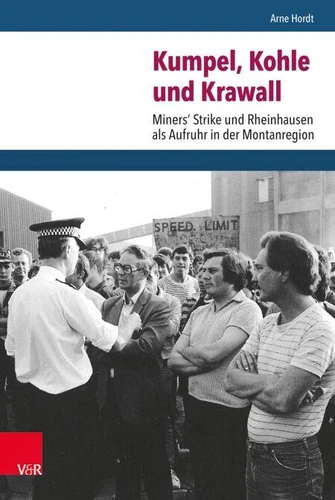Kumpel, Kohle und Krawall. Miners' Strike und Rheinhausen als Aufruhr in der Montanregion
Par : , ,Formats :
Disponible dans votre compte client Decitre ou Furet du Nord dès validation de votre commande. Le format PDF est :
- Compatible avec une lecture sur My Vivlio (smartphone, tablette, ordinateur)
- Compatible avec une lecture sur liseuses Vivlio
- Pour les liseuses autres que Vivlio, vous devez utiliser le logiciel Adobe Digital Edition. Non compatible avec la lecture sur les liseuses Kindle, Remarkable et Sony
 , qui est-ce ?
, qui est-ce ?Notre partenaire de plateforme de lecture numérique où vous retrouverez l'ensemble de vos ebooks gratuitement
Pour en savoir plus sur nos ebooks, consultez notre aide en ligne ici
- Nombre de pages309
- FormatPDF
- ISBN978-3-647-37066-8
- EAN9783647370668
- Date de parution16/07/2018
- Protection num.pas de protection
- Taille8 Mo
- Infos supplémentairespdf
- ÉditeurVandenhoeck & Ruprecht
Résumé
The 1984-85 miners' strike shapes the way British politics and society function until today. It was a crunch time for British democracy, the welfare-state and the rule of law. Who were the villains and who the victims? The answer lies in a fresh look at localized violence during the strike: What happened at the pit-gates in the North-East of England was far more relevant than the papers in London knew.
Here, workers, their wives and families together with activists from the Labour movement shaped a new culture of protest and resistance. They fashioned a narrative about the North of England and the miners' strike which fascinates until today. Here is the full story of how they did it!
Here, workers, their wives and families together with activists from the Labour movement shaped a new culture of protest and resistance. They fashioned a narrative about the North of England and the miners' strike which fascinates until today. Here is the full story of how they did it!
The 1984-85 miners' strike shapes the way British politics and society function until today. It was a crunch time for British democracy, the welfare-state and the rule of law. Who were the villains and who the victims? The answer lies in a fresh look at localized violence during the strike: What happened at the pit-gates in the North-East of England was far more relevant than the papers in London knew.
Here, workers, their wives and families together with activists from the Labour movement shaped a new culture of protest and resistance. They fashioned a narrative about the North of England and the miners' strike which fascinates until today. Here is the full story of how they did it!
Here, workers, their wives and families together with activists from the Labour movement shaped a new culture of protest and resistance. They fashioned a narrative about the North of England and the miners' strike which fascinates until today. Here is the full story of how they did it!



